Essential Trek Permits for Mardi Himal Trek: A Guide for Travelers
Planning your dream trek to the amazing Mardi Himal can quickly turn stressful when you're hit with confusing information about the required permits. You start asking yourself—what permits do I even need? Where do I get them? How much do they cost?
And worse, your fear being stopped on the trail or fined for missing one. It’s frustrating, especially when all you want is to focus on the magical views and the peaceful experience of trekking through the Himalayas.
But don’t worry—we’ve got your back. In this blog, we’ll walk you through everything you need to know about Trek Permits for Mardi Himal Trek, with clear answers to common questions, honest guidance from experience, and helpful tips to make sure you’re 100% ready for your adventure.
What are the required Permits for the Mardi Himal Trek?
To legally and safely complete the Mardi Himal Trek, you need two permits:
- Annapurna Conservation Area Permit (ACAP)
- Trekkers’ Information Management System (TIMS) Card
Why You Need Them:
The ACAP is needed because the Mardi Himal trail runs through the protected Annapurna Conservation Area. It helps fund conservation and infrastructure projects, and yes—it’s absolutely mandatory.
The TIMS card is just as crucial. It’s a tracking system managed by the Nepal Tourism Board and Trekking Agencies’ Association of Nepal (TAAN). It’s mainly used for safety and rescue purposes. In case of emergencies, this card helps locate trekkers quickly.
So to be clear, if you're doing the Mardi Himal Trek, you must have both the ACAP and TIMS permits.
Recommendation Read: 10 Reasons to Choose Mardi Himal Trek Over Other Treks in Nepal
How to Obtain ACAP (Annapurna Conservation Area Permit)
Obtaining the Annapurna Conservation Area Permit (ACAP) is simple but requires some preparation. Here’s a step-by-step breakdown:
Step-by-Step Guide:
- Visit an Authorized Office: Go to the Nepal Tourism Board Office in either Kathmandu or Pokhara.
- Documents Needed:
- Original passport (and a copy)
- Two passport-sized photos
- Form Filling: Fill out a short form that asks for your trek itinerary, contact information, and duration.
- Pay the Fee: Foreigners pay NPR 3,000; SAARC nationals pay NPR 1,000. Cash is required.
- Receive Your ACAP: The permit will be issued the same day. Double-check that your name, passport number, and trek dates are correct.
ACAP Validity:
Valid for single entry into the Annapurna region for the entire duration of your trek. If you exit and re-enter, you may need a new permit.
How to Obtain TIMS (Trekkers' Information Management System)
The Trekkers' Information Management System (TIMS) card is crucial for tracking and safety. Here’s how to get it:
Process:
- Go to an Authorized Office:
- Nepal Tourism Board (Kathmandu or Pokhara)
- TAAN Office in Pokhara (Malepatan)
- Required Documents:
- Passport and copy
- Two passport-sized photos
- Fill Out the TIMS Form: Provide personal and trek details.
- Payment:
- NPR 2,000 for independent trekkers
- NPR 1,000 through a registered agency
- Collect Your TIMS Card: Issued immediately upon payment.
If trekking through an agency, they usually handle both ACAP and TIMS paperwork for you.
How Much Do the Mardi Himal Trek Permits Cost?
Let’s break it down so you know exactly what to budget:
- ACAP Permit:
- NPR 3,000 (~USD 23) for foreign nationals
- NPR 1,000 (~USD 8) for SAARC nationals
- TIMS Card:
- NPR 2,000 (~USD 15) for individual trekkers
- NPR 1,000 (~USD 8) if you’re going through a trekking agency
If you’re planning to hire a guide or book through a tour company, some of them include these costs in the package. Still, it’s best to ask.
Tip: Always carry some cash in Nepali Rupees when you apply. Most permit offices don’t accept cards.
Also, if you are considering when is the best time to trek on this, don't worry, read our blog Best Time to Trek Mardi Himal: A Complete Seasonal Guide
Where and How Can You Obtain the Necessary Permits?
Getting your trek permits for Mardi Himal Trek is quite straightforward.
Where to get them:
- Kathmandu:
- Nepal Tourism Board Office (Bhrikutimandap)
- Pokhara:
- Nepal Tourism Board Office (Damside)
- TAAN Office (Malepatan)
What you need:
- A copy of your passport
- Two passport-sized photos
The process usually takes about 30 minutes. You fill out a short form, pay the fees, and you’re good to go. If you’re going with a guide, they often handle this for you.
Crucial Terms and Conditions for Your Mardi Himal Trek Permits: What Are the Rules and Regulations Associated with the Permits?
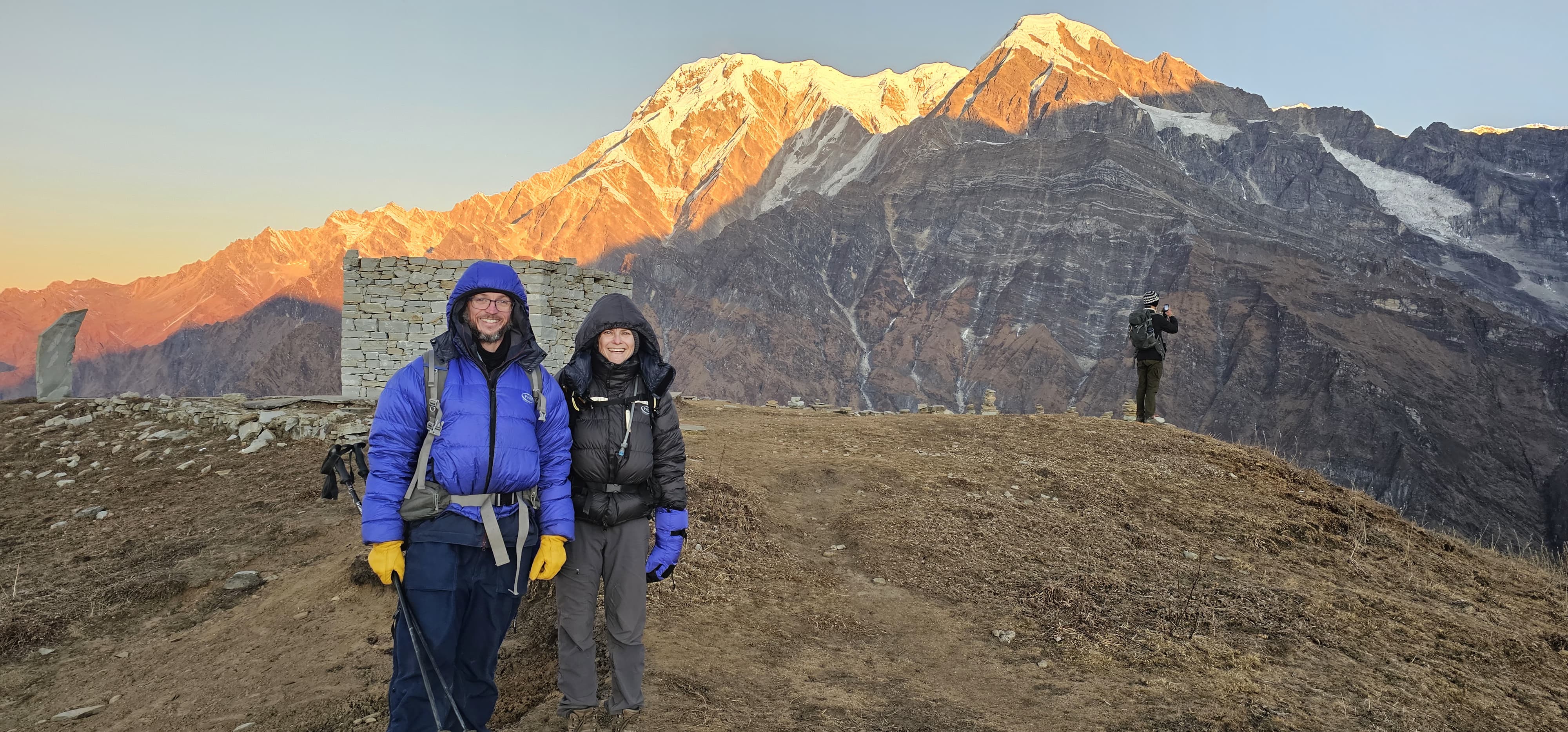
Permits come with specific rules that trekkers must follow:
- Non-transferable: You cannot use someone else’s permit or give yours to others. It’s illegal.
- Must be Original: Only hard copies are accepted at checkpoints.
- No Alteration Allowed: Handwriting changes or erasures invalidate permits.
- Valid Region Only: ACAP is for the Annapurna region only. Don’t use it elsewhere.
- Respect the environment: Permits support conservation, so do your part by not littering and respecting local customs.
- Always Carry Permits: You’ll meet several checkpoints along the way, and officials will ask to see your permits.
- Stick to the trail: Your permit is valid for a specific trekking region. You cannot use an ACAP for, say, the Everest region.
Violating any of these may result in being removed from the trail or fined.
Where to Check In and Check Out While Mardi Himal Trekking
Permit verification checkpoints exist to monitor traffic and ensure safety.
Entry Checkpoints:
- Kande (main trailhead)
- Phedi (alternative starting point)
Midway Checks:
- Forest Camp
- High Camp
Exit Points:
- Siding
- Lumre
These checkpoints record your permit details, which helps track your movement and manage rescue in emergencies. There is no formal “check-out” process, but exiting checkpoints may ask for your TIMS card to confirm exit.
Pro Tips: Keep your documents easily accessible and protected from rain/snow.
Is Hiring a Licensed Guide Mandatory for the Mardi Himal Trek?
As of recent government regulations (effective from April 2023), hiring a licensed guide is now mandatory for most treks in Nepal, including Mardi Himal.
Yes, this might feel like an extra expense, but it’s totally worth it. Here’s why:
- Safety: Guides know the trail and can respond in case of emergencies.
- Navigation: No stress about getting lost.
- Cultural Insights: They’ll enrich your experience with stories, history, and local knowledge.
Many agencies in Pokhara or Kathmandu offer licensed guide services. Rates generally range from USD 20–30 per day, depending on experience.
What Is the Validity Period of the Trekking Permits?
One good thing about these permits. They're valid until your trek ends—no daily limits.
Whether you’re doing a 5-day express version or a longer, 10-day scenic route, your ACAP and TIMS card cover the whole trip.
Just make sure the permits are dated correctly on the day you start the trek. If your dates change, head back to the permit office for an update.
Are There Any Additional Fees or Levies to Be Aware Of?
Thankfully, for the Mardi Himal trek, there aren’t any hidden surprise charges once you’ve got your ACAP and TIMS card.
But here’s what you should budget for:
- Guide/Porter fees if you’re hiring one
- Transportation to the trailhead (Kande or Phedi)
- Food and lodging along the trail
- Emergency evacuation insurance (highly recommended)
- No need to worry about local village taxes on this route—those are more common in other treks like Ghorepani or Manaslu.
What Essential Items Should You Carry Alongside Your Permits?
Once you have your trek permits for the Mardi Himal Trek, keep them safe. Here’s a checklist of must-carry items:
- Original passport and a photocopy
- Trekking insurance documents
- Contact info for your guide or agency
- Emergency contacts (both local and home)
- Cash (ATMS are not available on the trail)
- Lightweight folder or a plastic sleeve to protect your permits
Pro tip: Just in case you lose the permits, keep digital copies of everything in your email or cloud storage.
Travel Smart: Essential Items for Your Mardi Himal Journey
Smart packing makes all the difference. Here’s what to bring alongside your permits:
Documents:
- Original passport + photocopy
- TIMS and ACAP permits
- Trek insurance certificate
- Local emergency contact info (agency or guide)
- Home country emergency contact
Gear:
- Trekking boots (broken-in)
- Thermal base layers
- Insulated down jacket
- Waterproof outerwear
- Gloves, beanie, sun hat
- Sunglasses with UV protection
- Sunscreen and lip balm
- Reusable water bottle and purification tabs
- Headlamp or flashlight with extra batteries
Tech & Emergency:
- Phone with offline maps (e.g., Maps.me or Gaia)
- Power bank
- First aid kit with altitude sickness meds
- Whistle or emergency signal mirror
Extras:
- Snacks and energy bars
- Lightweight towel
- Trekking poles
- Plastic folder or ziplock to protect documents
Pro Tip: Upload digital backups of your documents to cloud storage.
For more, read our blog "Essential Trekking Preperation For Nepal"
Final Thoughts
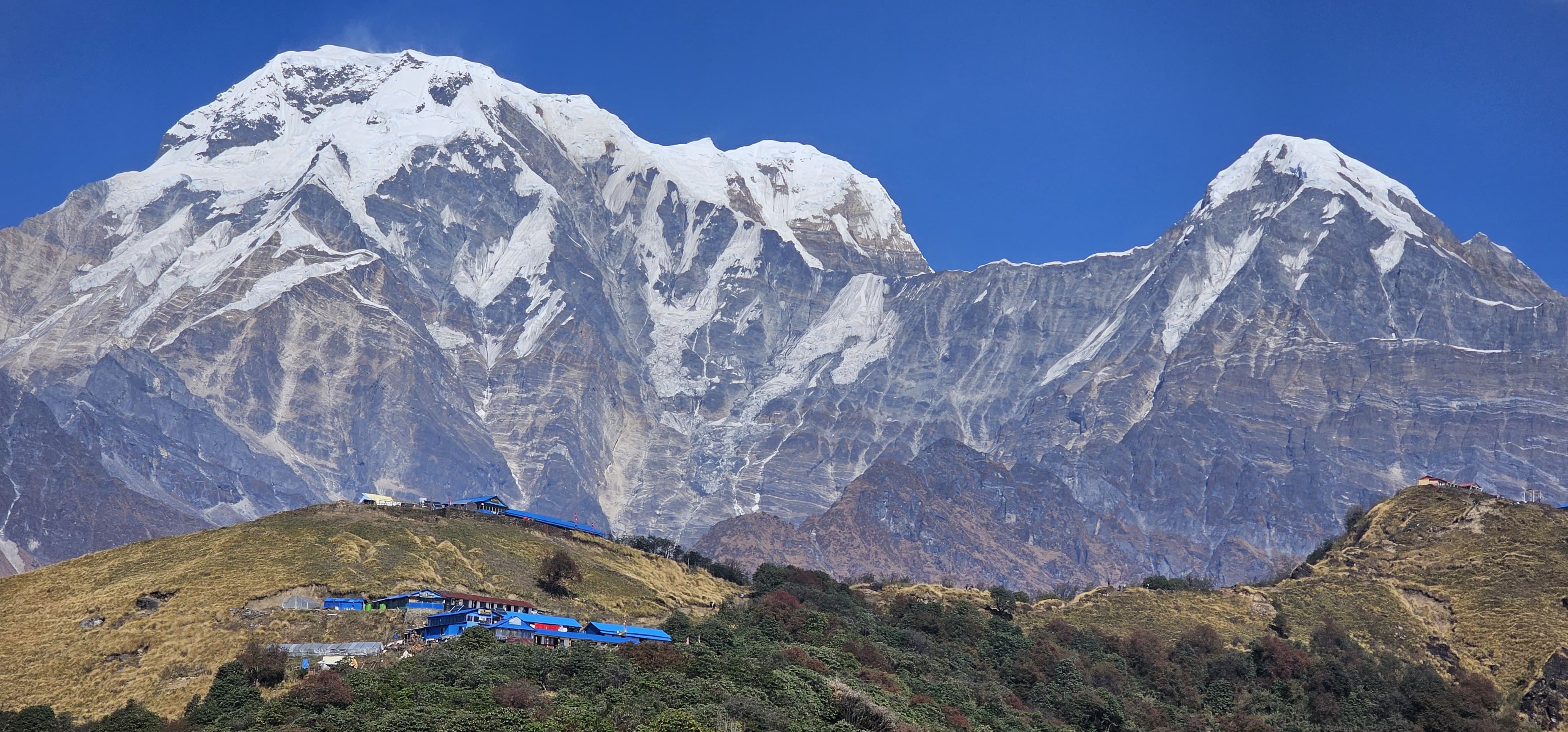
If you’re dreaming about the misty forests, amazing views of the Himalayas, and cozy teahouses of Mardi Himal, don’t let permit confusion hold you back. Getting your trek permits for Mardi Himal Trek is easy once you know the steps—and now you do!
Ready to plan your trek? Let Dolpo Caravan handle the logistics while you focus on the journey. Contact us today for personalised trek packages, permit assistance, and expert local guides who know every twist of the Mardi Himal trek.
Visit Dolpo Caravan Trekking to book your next unforgettable adventure in the Himalayas!
FAQs
Do I really need both the ACAP and TIMS card for the Mardi Himal Trek?
Yes, both the Annapurna Conservation Area Permit (ACAP) and the TIMS card are mandatory for the Mardi Himal Trek. These permits are essential for conservation, safety tracking, and legal trekking authorization in the region.
Where can I get the Mardi Himal Trek permits?
You can get the permits in Kathmandu (Nepal Tourism Board, Bhrikutimandap) or in Pokhara (Nepal Tourism Board, Damside or TAAN Office, Malepatan). The process is quick and requires a passport and two passport-sized photos.
How much do the Mardi Himal Trek permits cost in total?
For foreign nationals, the total cost is around NPR 5,000 (~USD 38): NPR 3,000 for the ACAP and NPR 2,000 for the TIMS card. If you're trekking through a licensed agency, TIMS might cost only NPR 1,000.
Can I get the permits online before arriving in Nepal?
As of now, permits for Mardi Himal Trek must be obtained in person at authorized offices in Kathmandu or Pokhara. There’s no official online application system.
Is a guide mandatory for the Mardi Himal Trek?
Yes. Since April 2023, Nepal has made it mandatory to hire a licensed guide for most trekking routes, including Mardi Himal. This rule ensures safety and helps with local employment.
How long are the Mardi Himal Trek permits valid?
Both ACAP and TIMS cards are valid for the entire duration of your trek. You donot have to renew the permits unless you change your trekking dates or region.
What happens if I trek without the required permits?
Trekking without permits is illegal. You may be fined, denied access at checkpoints, or even sent back. Always carry valid permits to avoid penalties and ensure a smooth trekking experience.

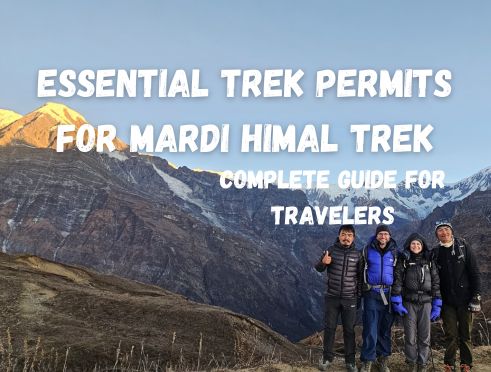
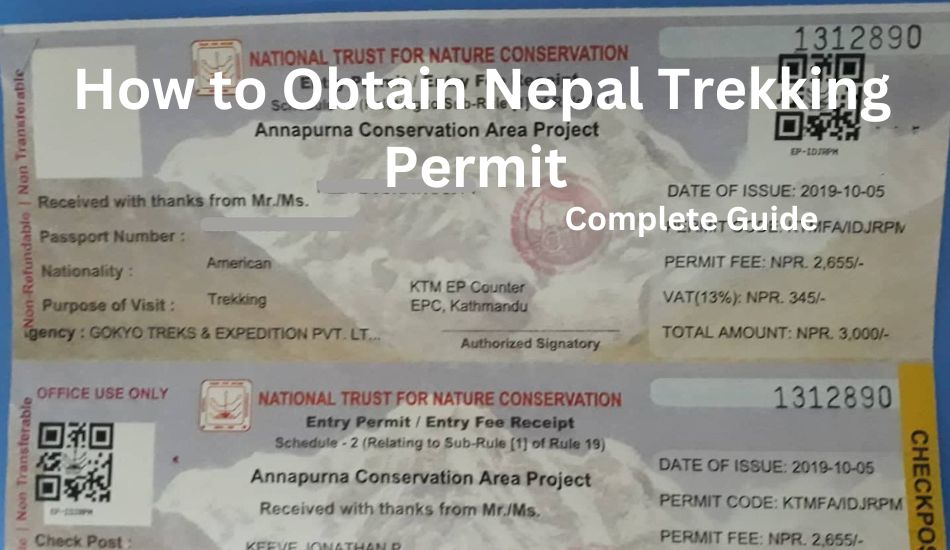



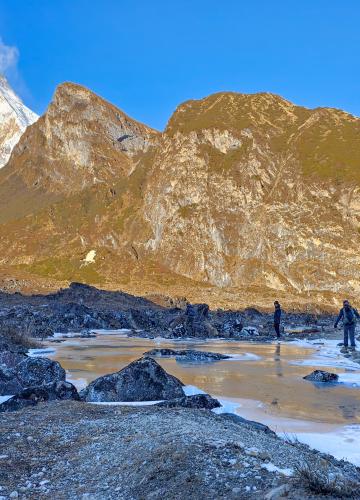
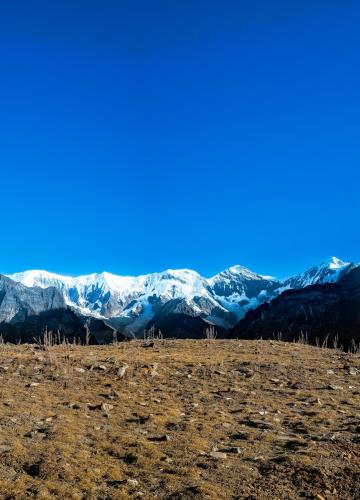

Leave Your Comment